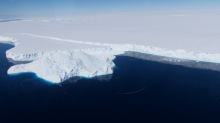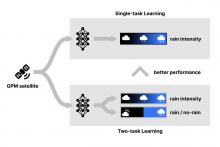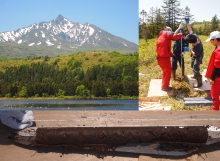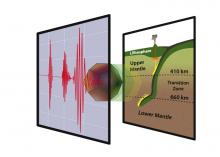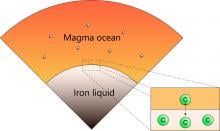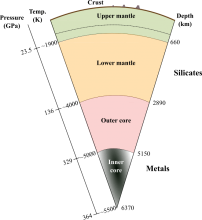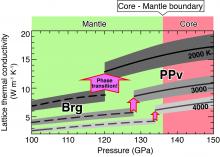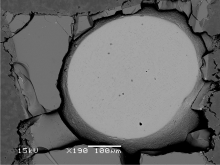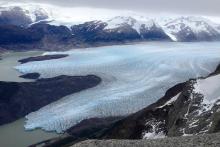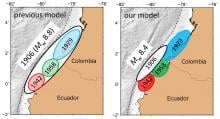Geophysical Research Letters
News
23 May 2023
Acoustic signals can be effectively used for monitoring glacial runoff and provide a cheaper and more accessible alternative to existing methods.
06 Apr 2023
Researchers from the Institute of Industrial Science, The University of Tokyo, find that a deep-learning model that simultaneously learns to classify satellite data as rain/no-rain while determining rain intensity outperforms other models.
31 Jan 2023
The study is an important step towards the understanding of long-term changes in the water cycle and will aid in more informed decisions when assessing and managing regional water systems.
19 Dec 2022
Sound velocities of superhydrous phase B and the presence of water in the Earth’s mantle
05 Jul 2022
Scientists from Hokkaido University have reconstructed the climate of Hokkaido over the past 4400 years and have revealed that changes in the climate influenced changes in historic cultures during that time.
09 Dec 2021
Using data on electromagnetic (EM) waves and plasma particles measured simultaneously via multiple satellites, an international collaborative research group has discovered the existence of invisible “propagation path” of EM waves and elucidated the mechanism by which EM waves propagate to the ground.
23 Aug 2021
Researchers at Ehime University have reported the sound velocity of MgSiO3 Majorite garnet up to the pressure of 18 Gigapascals and temperature up to 2,000 Kelvins. Their results lead to understanding of the mineral composition of the Earth’s mantle transition zone (MTZ), which has not been fully elucidated yet. This study suggests that a mechanical mixture of slab and mantle rocks, rather than equilibrated rocks, is more likely to explain seismological observations throughout the MTZ.
04 Jun 2021
Coral insights into 1,000 years of seasonal changes in the Arabian Sea warn of significant impacts caused by global warming.
01 Jun 2021
Carbon degassed from planetary mantles by volcanic activity plays an important role in the planetary surface environment. However, how the carbon content in the Earth’s mantle was established is still poorly understood. Here we show that the mantle of planetary embryos may have been nearly saturated with carbon by new high-pressure experiments and pointed out that the carbon solubility of magma is very consistent with the estimated carbon contents in terrestrial and lunar mantles.
06 May 2021
A stable isotope of helium, 3He, was produced by the Big Bang and a remnant of the solar nebula.
3He is included in ocean island basalts, such as in Hawaiian volcanos, indicating it has been stored somewhere in the deep Earth and carried up to the surface in upwelling plumes.
New computer simulations demonstrate that even in small amounts, helium can be dissolved in liquid iron at ultrahigh-pressure conditions, suggesting that there is a reservoir in the Earth’s core.
01 Dec 2020
Researchers at Ehime University have recently measured the propagation speed of ultrasonic waves in an aluminum-rich hydrous mineral called Al-phase D at pressure conditions relevant to the Earth’s deep mantle. Their results suggest that seismic shear anomalies observed locally beneath subduction zones may reveal the presence of hydrous minerals in the uppermost lower mantle, which would have important implications for the Earth’s interior because hydrogen affects considerably the physical and chemical properties of mantle minerals.
13 Feb 2020
Lattice thermal conductivities of MgSiO3 bridgmanite and postperovskite (PPv) phases under the Earth’s deepest mantle conditions were determined by quantum mechanical computer simulations. We found a substantial increase in the conductivity associated with the phase change. This indicates that the PPv phase boundary is the boundary not only of the mineralogy but also the thermal conductivity. The effect of anisotropy on the conductivity of PPv in the heat transport properties at the lowermost mantle was also found to be minor.
13 Dec 2019
JAXA and NASA satellite observations show where killer electrons are generated in the Van Allen radiation belts surrounding Earth.
24 Sep 2019
A magma ocean existing during the core formation is thought to have been highly depleted in carbon due to its high-siderophile (iron loving) behavior. Thus, most of the carbon forming the atmosphere and life on Earth may have been delivered by a carbon-rich embryo after the core formation. However, a new high-pressure experiment has shown that previous studies may have overestimated the amount of carbon partitioning to the core.

19 Aug 2019
Phase H is a hydrous mineral that is considered to be an important carrier of water into deep Earth. We determined the dissociation condition of phase H by a theoretical calculation based on quantum mechanics. Phase H decomposes at approximately 60 GPa at 1000 K. This indicates that the transportation of water by phase H may be terminated at a depth of approximately 1,500 km in the middle of the lower mantle.
02 Apr 2019
Glaciers extending into freshwater lakes can form long, submerged terraces that menacingly rise above the surface when icy chunks fall into the water.
27 Apr 2017
A Nagoya University-led team reveals the mechanisms behind different earthquakes at a plate boundary on the west coast of South America, shedding light on historical seismic events and potentially aiding prediction of the future risk from these natural disasters.
Events
Sorry, no events coming up for this topic.
Researchers
Sorry, no researchers coming up for this topic.
Giants in history
Sorry, no researchers coming up for this topic.


